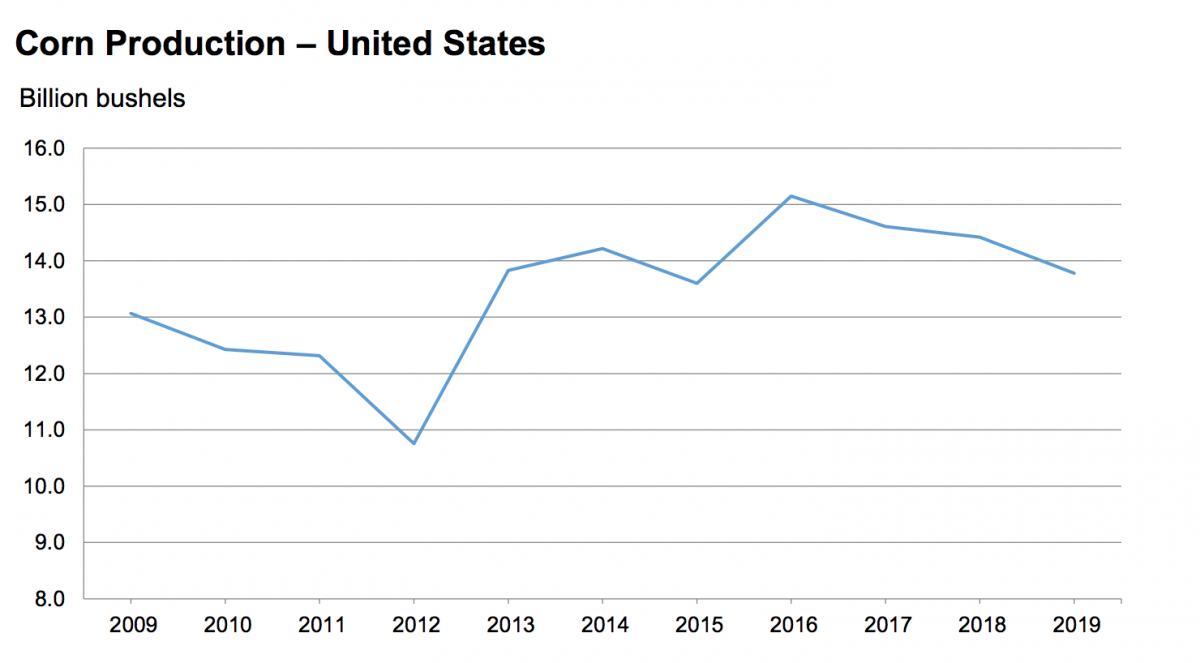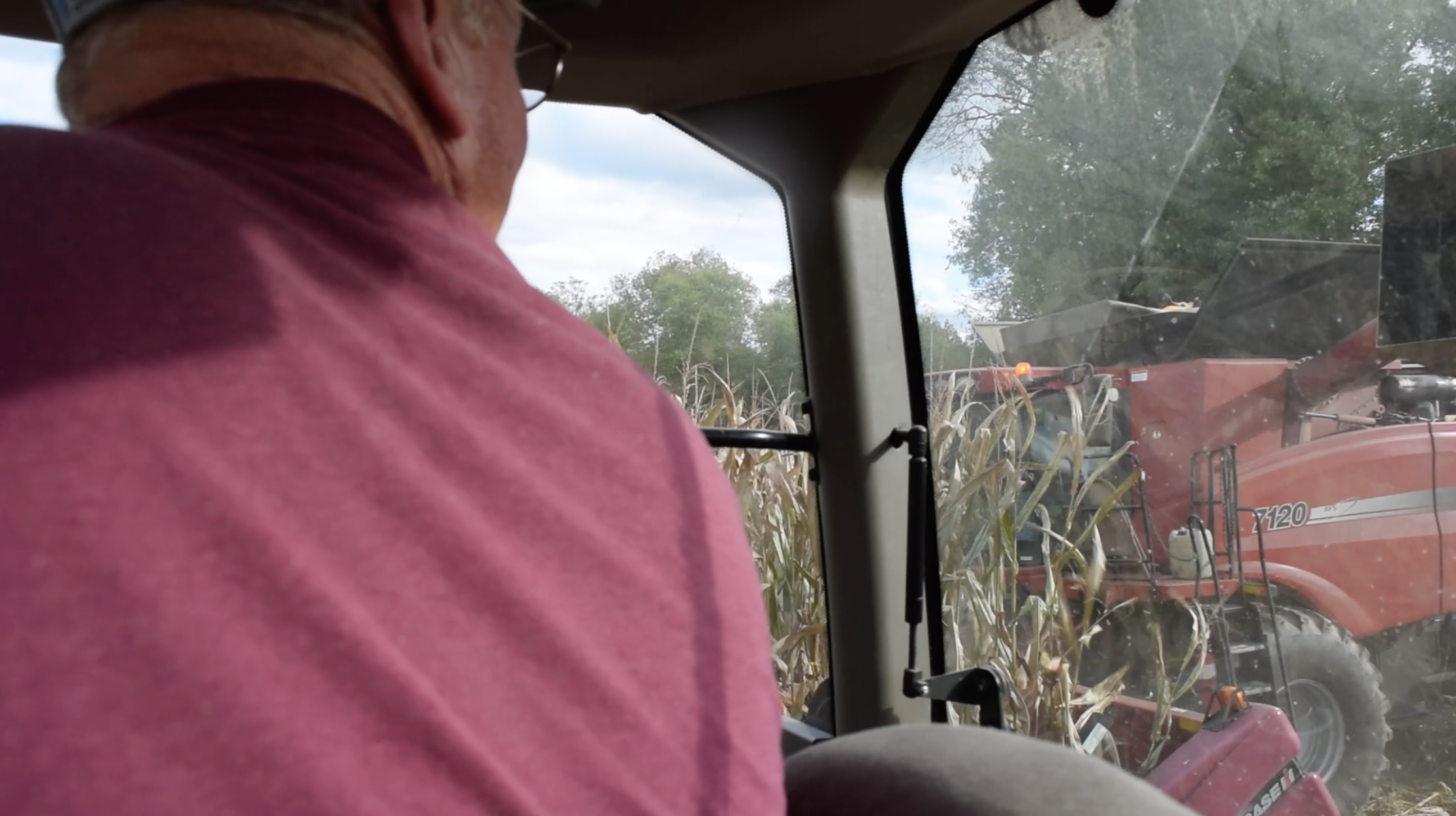News

Southeast Ohio Farmers Survive Challenging Corn Season
By: Elise Hammond
Posted on:
ATHENS (WOUB) — Eric Brooks hops out of his red, dusty combine in battered blue jeans and a green trucker cap. The hulking machine rumbles as he gazes over his field. There’s just one strip of corn left here that needs to be harvested, but the job is far from over. There are 500 more acres of corn across Southeast Ohio that Brooks will have to take down with his equipment.

Brooks has been farming since he was 13, and has fields in Athens, Nelsonville and Meigs counties where he plants about 1,300 acres of corn, wheat and soybeans each year. He lives on the same farm in New Marshfield where he grew up, so he is no stranger to the struggles of farming in Ohio.
This year, the United States Department of Agriculture estimated Ohio’s total corn production would decrease 34% from last year, making it the smallest crop in the state since 2008.
Now that the season is over, the numbers show the predictions were correct. In Ohio, corn for grain production dropped by more than 200 million bushels, and the total acres of corn harvested in the state dropped by more than 700,000 acres from 2018 to 2019, according to the USDA.
But while the USDA’s forecast was true for most of the state, Brooks said Southeast Ohio got lucky.
“Those farmers are really suffering this year. A lot of them just didn’t get anything planted,” Brooks said. “This very may well be the garden spot of Ohio.”
Rory Lewandowski, an extension educator and crop production expert at the Agricultural Institute of Technology at Ohio State, said this year’s weather was challenging for Ohio farmers. He said about a million and a half acres of crops did not get planted this year and those that did, were planted late because of wet weather conditions.
“This was by far the worst conditions we’ve had,” Lewandowski said, adding that the state has had wet spring weather for the last three years.

Brooks said the weather determines if a farmer’s season is a success or a loss. Big corn producers in the Northwest and Western parts of the state experienced a rainy May and June and then a drought the rest of the summer months. This means they were not able to get their crop planted on time due to the ground being too wet. Crops that are planted late are then subjected to damage from frost and cold temperatures.
“There are a lot of variables of this corn crop. We’re just lucky ours matured normally and we’re going to be above the curve this time,” Brooks said. “Last year we were behind because we had flood damage real bad in Nelsonville late, about June. That was our turn in the bad weather deal.”
Lewandowski said this trend of declining crop production is happening across the corn belt in states like Wisconsin, Michigan and Minnesota. In fact, corn production across the country has been decreasing since 2016, according to the USDA.
“It’s really added up to be a stressful year for farms and farm families,” he said.
Brooks said he buys crop insurance and uses government subsidies to try to offset losses due to weather conditions, but when it comes to preparing for next season, he said there is not much else he can control.
“We’re at the mercy of the weather and sometimes it works out and sometimes it doesn’t,” Brooks said. “You just do the best you can do in the situation that you’re given and hope for the best.”

